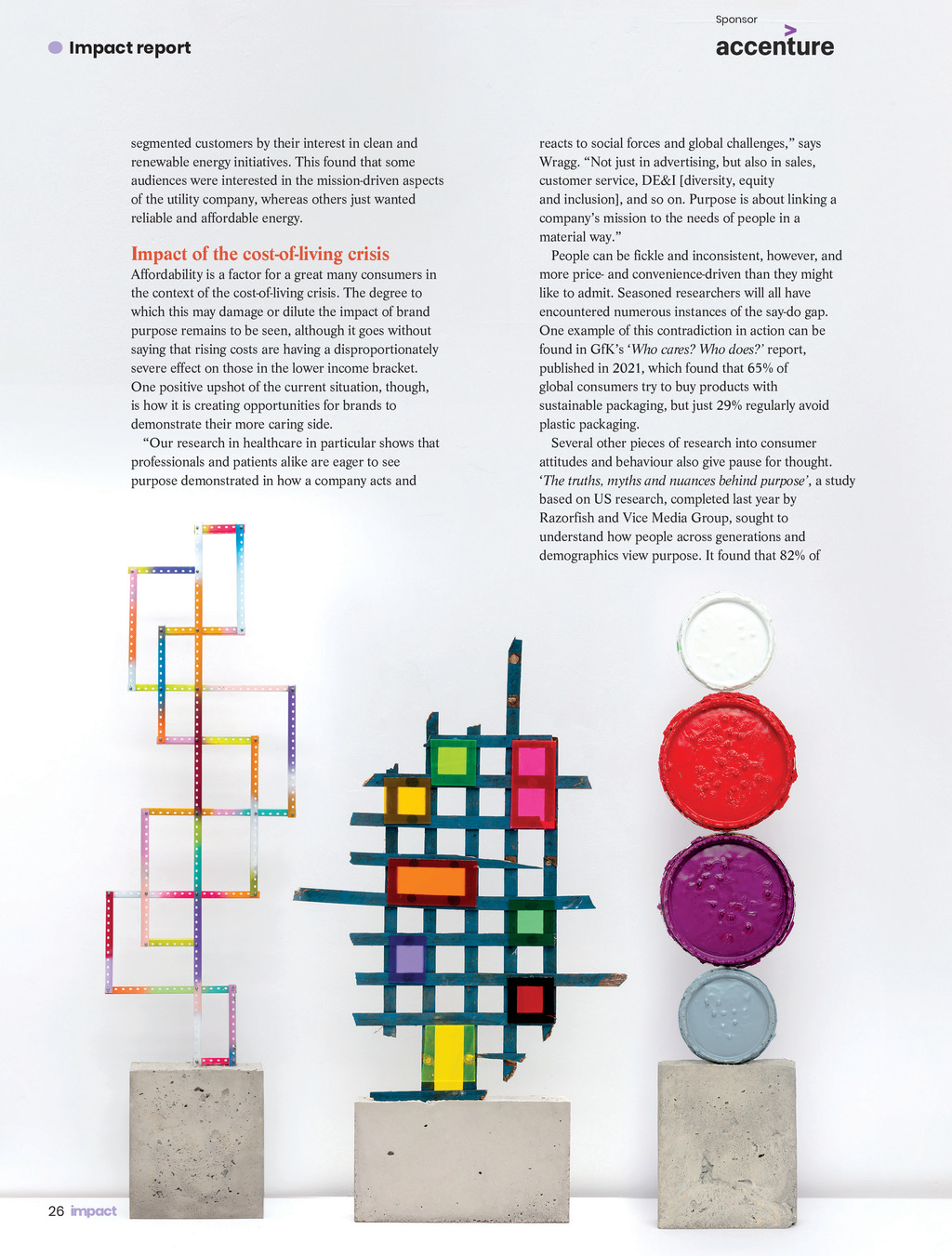




Sponsor Impact report segmented customers by their interest in clean and renewable energy initiatives. This found that some audiences were interested in the mission-driven aspects of the utility company, whereas others just wanted reliable and affordable energy. Impact of the cost-of-living crisis Affordability is a factor for a great many consumers in the context of the cost-of-living crisis. The degree to which this may damage or dilute the impact of brand purpose remains to be seen, although it goes without saying that rising costs are having a disproportionately severe effect on those in the lower income bracket. One positive upshot of the current situation, though, is how it is creating opportunities for brands to demonstrate their more caring side. Our research in healthcare in particular shows that professionals and patients alike are eager to see purpose demonstrated in how a company acts and reacts to social forces and global challenges, says Wragg. Not just in advertising, but also in sales, customer service, DE&I [diversity, equity and inclusion], and so on. Purpose is about linking a companys mission to the needs of people in a material way. People can be fickle and inconsistent, however, and more price- and convenience-driven than they might like to admit. Seasoned researchers will all have encountered numerous instances of the say-do gap. One example of this contradiction in action can be found in GfKs Who cares? Who does? report, published in 2021, which found that 65% of global consumers try to buy products with sustainable packaging, but just 29% regularly avoid plastic packaging. Several other pieces of research into consumer attitudes and behaviour also give pause for thought. The truths, myths and nuances behind purpose, a study based on US research, completed last year by Razorfish and Vice Media Group, sought to understand how people across generations and demographics view purpose. It found that 82% of 26 Impact ISSUE 39 2022_pp22-31_Report.indd 26 23/09/2022 15:01